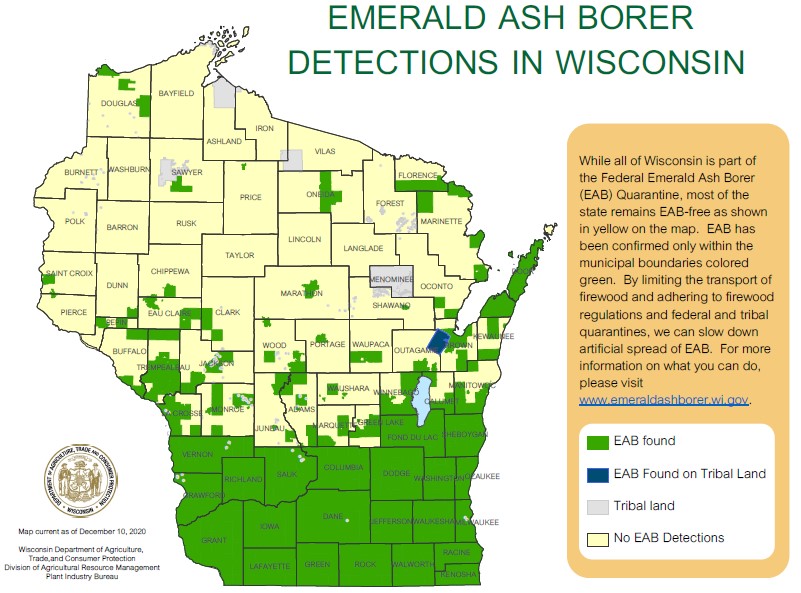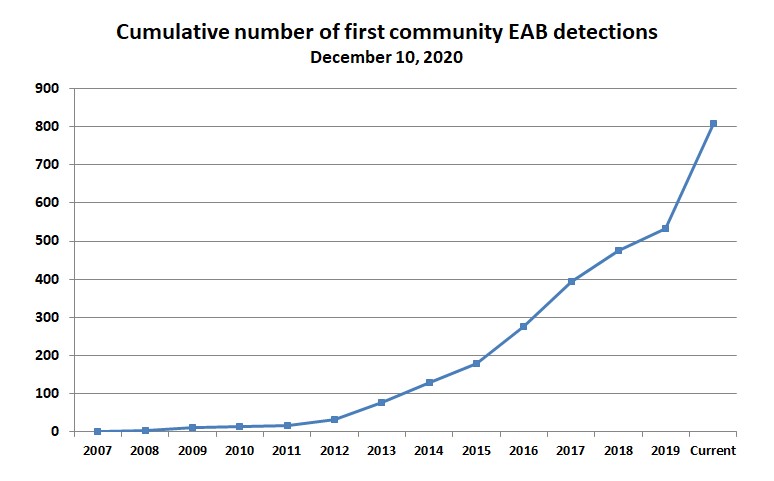By Bill McNee, DNR Forest Health Specialist, Oshkosh, bill.mcnee@wisconsin.gov, 920-360-0942
Emerald ash borer (EAB) reports continued to grow across Wisconsin in 2020. The total number of communities with EAB was 808 as of December, an increase of over 50% since the start of 2020. In addition, the insect was confirmed for the first time in six additional counties (Dunn, Florence, Oconto, Pepin, Price and Shawano) during 2020. EAB has now been found in 58 of Wisconsin’s 72 counties and confirmed on Oneida Nation land. Additional unreported infestations are widely believed to be present.

Municipal (green) and Tribal (blue) EAB detections in Wisconsin as of Dec. 10, 2020. Map created by the Wisconsin Dept. of Agriculture, Trade and Consumer Protection.
As of December 2020, the pest has been found in 44% of all Wisconsin municipalities including 120 cities (63% of all cities), 220 villages (54% of all villages) and 468 towns (38% of all towns). Cities are disproportionately located in the southern half of Wisconsin, where EAB is now a common insect. In contrast, large numbers of towns are present in the northern half of Wisconsin, where EAB is much less common.

Cumulative number of communities where EAB has been detected in Wisconsin as of December 2020.
By population, the five largest communities that have yet to report an EAB infestation are: Menomonie (52nd largest), Weston (57th largest), Chippewa Falls (61st largest), Plover (67th largest), and Suamico (71st largest). However, EAB is likely present in some or all of these five communities. During 2020, EAB was found in four of the five largest communities that had yet to detect EAB at the end of 2019 (Wausau, Marshfield, Fox Crossing and Kaukauna).
Additional information about EAB identification, detections and management can be found online at www.emeraldashborer.wi.gov.
(EAB municipal information is from the master list maintained by the Wisconsin Department of Agriculture, Trade and Consumer Protection. Community information is from the Wisconsin Department of Administration, Demographic Services Center and uses estimated 2020 populations.)
